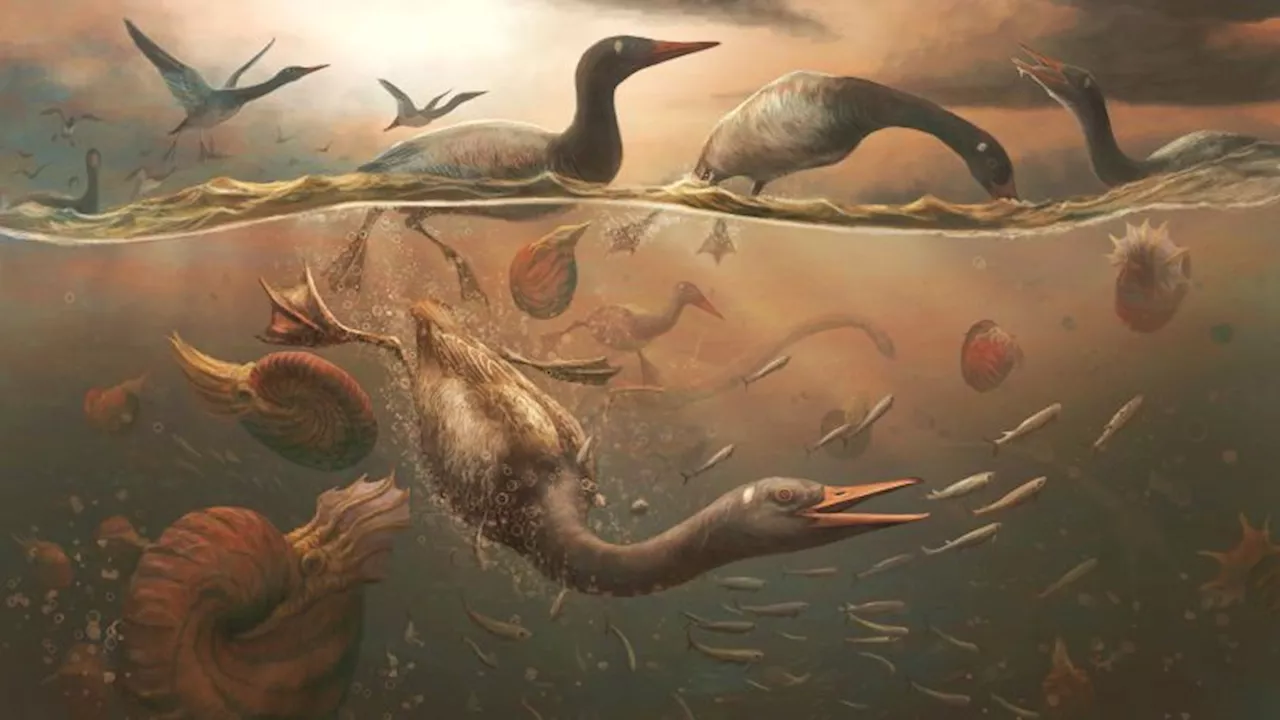A nearly complete skull fossil of Vegavis iaai, a 68 million-year-old bird species, has been unearthed in Antarctica. This discovery pushes back the timeline for modern bird evolution and sheds light on their resilience in the face of catastrophic events like the asteroid impact that wiped out the dinosaurs.
A nearly complete skull fossil unearthed in Antarctica has unveiled the oldest known modern bird . This 68 million-year-old fossil belongs to an extinct species called Vegavis iaai, which inhabited the Earth during the Late Cretaceous period, a time when Tyrannosaurus rex ruled North America and just before a colossal asteroid impact wiped out the dinosaurs.
This discovery sheds light on the evolution of birds, particularly how they transitioned from the bizarre, tooth-beaked species that coexisted with dinosaurs to the modern avian forms we see today. Vegavis, according to Christopher Torres, an assistant professor of biology at the University of the Pacific in California and lead author of the study published in the journal Nature, exhibited characteristics akin to modern waterfowl like loons and grebes. It's estimated to have been the size of a mallard duck and lived a predominantly aquatic lifestyle. The fossil's skull revealed robust jaw muscles designed for swiftly snapping its beak shut underwater, indicating a predatory strategy targeting fish, much like loons and grebes employ today. Previous discoveries of Vegavis fossils, dating back 20 years, were incomplete and sparked skepticism regarding its classification as a modern bird. Most modern bird fossils found up to that point were post-dating the asteroid impact, leading some scientists to believe that modern-looking birds emerged after the mass extinction. However, the newly discovered fossil, collected during a 2011 expedition by the Antarctic Peninsula Paleontology Project, is encased in rock estimated to be 68.4 to 69.2 million years old. It displays unmistakable modern characteristics, including a toothless beak, solidifying its place within the modern bird lineage. Patrick O'Connor, a professor of anatomical sciences at Ohio University and co-author of the study, emphasized that the skull's preservation is crucial for identifying key features of modern birds, such as the absence of teeth and the enlarged premaxillary bone in the upper beak. The detailed skull analysis, aided by computerized tomography scans, revealed a brain structure consistent with modern avian blueprints, further supporting Vegavis' classification as a modern bird. This discovery not only pushes back the timeline for modern bird evolution but also offers intriguing insights into avian resilience. The existence of Vegavis, a modern bird predating the asteroid impact, suggests that some bird lineages may have possessed traits allowing them to withstand or even thrive in the aftermath of this global catastrophe. The fossil provides a window into the ancient world, revealing a bird species remarkably similar to its modern counterparts, thriving in a vastly different Antarctica. It also raises tantalizing questions about the evolutionary trajectory of birds and their ability to adapt and persist through periods of immense environmental change
Ancient Bird Fossil Antarctica Evolution Vegavis Iaai Cretaceous Period Modern Bird Asteroid Impact Paleontology Avian Evolution
United States Latest News, United States Headlines
Similar News:You can also read news stories similar to this one that we have collected from other news sources.
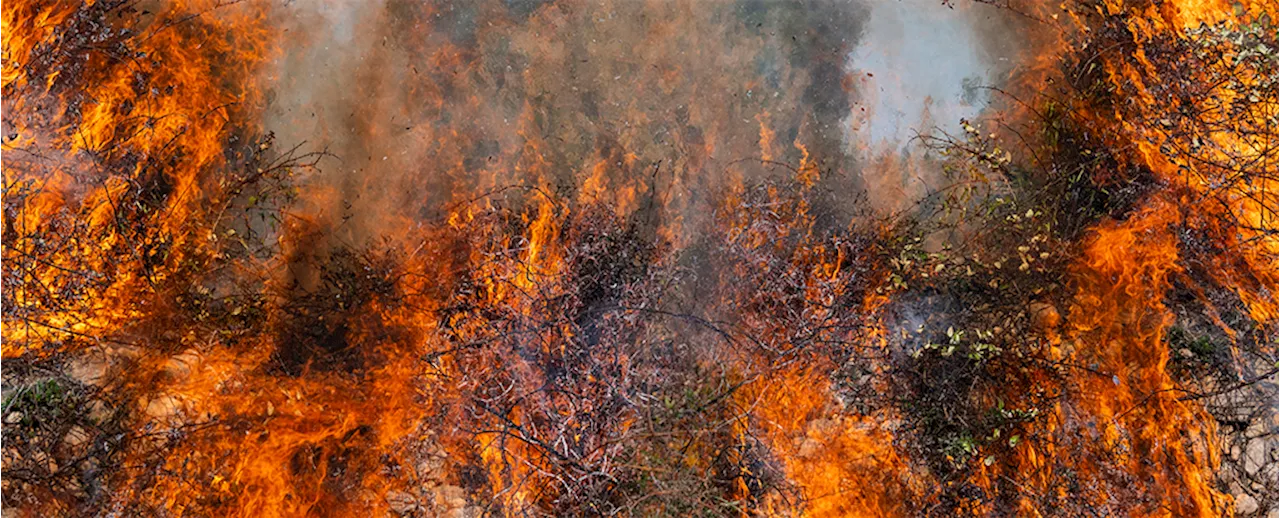 Wildfires Surged During Past Climate Shifts, Ancient Antarctic Ice RevealsThe Best in Science News and Amazing Breakthroughs
Wildfires Surged During Past Climate Shifts, Ancient Antarctic Ice RevealsThe Best in Science News and Amazing Breakthroughs
Read more »
 Ancient Dinosaur Fossil Challenges Timeline of Dinosaur EvolutionNew analysis of a newly discovered dinosaur fossil in Wyoming suggests dinosaurs roamed the northern hemisphere millions of years earlier than previously thought. This finding challenges the prevailing theory that dinosaurs originated in Gondwana and later spread to Laurasia. The fossil, estimated to be around 230 million years old, is now the oldest known Laurasian dinosaur.
Ancient Dinosaur Fossil Challenges Timeline of Dinosaur EvolutionNew analysis of a newly discovered dinosaur fossil in Wyoming suggests dinosaurs roamed the northern hemisphere millions of years earlier than previously thought. This finding challenges the prevailing theory that dinosaurs originated in Gondwana and later spread to Laurasia. The fossil, estimated to be around 230 million years old, is now the oldest known Laurasian dinosaur.
Read more »
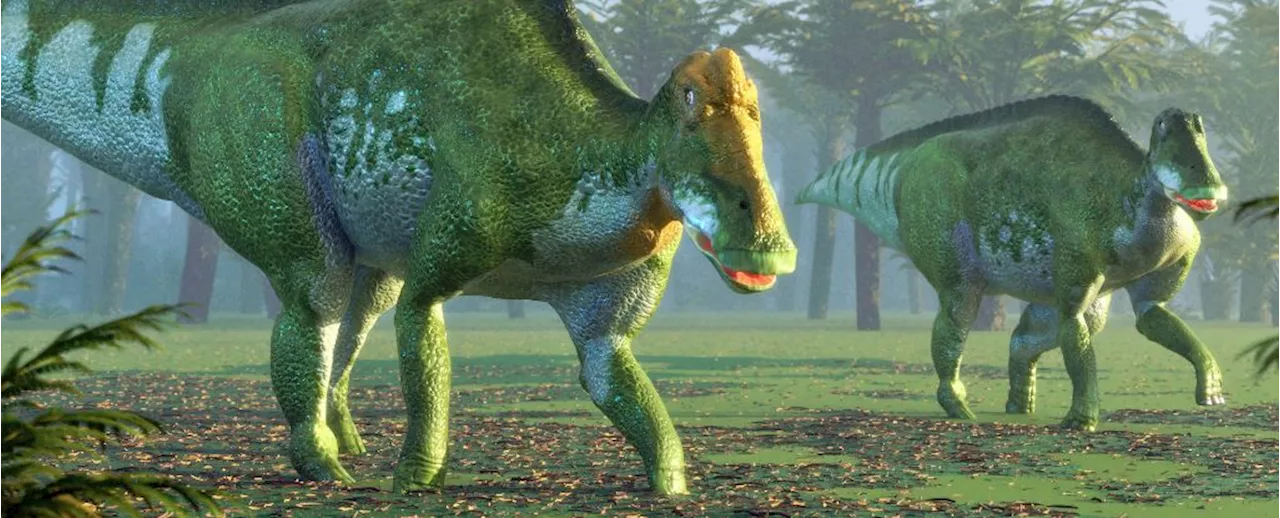 Dinosaur Fossil Yields Evidence of Ancient Collagen, Revolutionizing PaleontologyA groundbreaking discovery has unearthed evidence of collagen in a dinosaur fossil, challenging long-held beliefs about the preservation of organic material in ancient remains. This finding paves the way for new insights into the biology and evolution of dinosaurs.
Dinosaur Fossil Yields Evidence of Ancient Collagen, Revolutionizing PaleontologyA groundbreaking discovery has unearthed evidence of collagen in a dinosaur fossil, challenging long-held beliefs about the preservation of organic material in ancient remains. This finding paves the way for new insights into the biology and evolution of dinosaurs.
Read more »
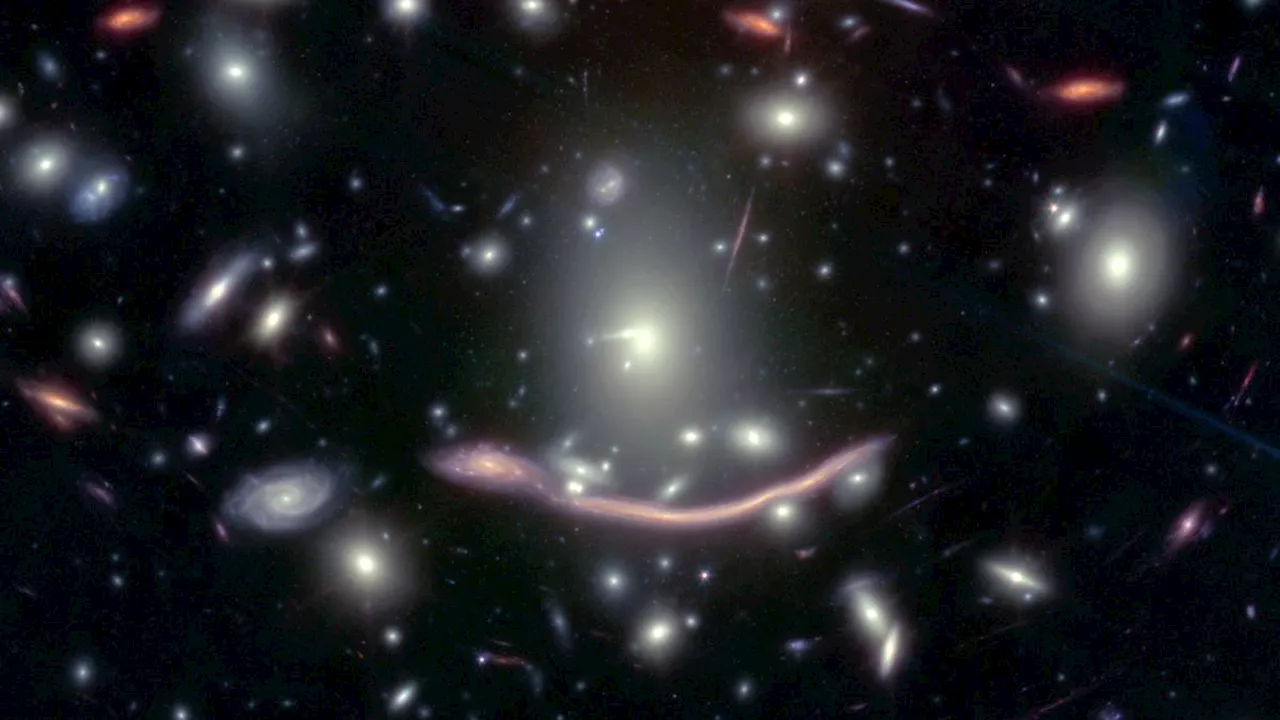 JWST Reveals Dozens of Ancient Stars in Gravitational LensThe James Webb Space Telescope (JWST) has captured unprecedented images of a distant galaxy named the 'Dragon Arc', revealing dozens of ancient stars magnified by gravitational lensing.
JWST Reveals Dozens of Ancient Stars in Gravitational LensThe James Webb Space Telescope (JWST) has captured unprecedented images of a distant galaxy named the 'Dragon Arc', revealing dozens of ancient stars magnified by gravitational lensing.
Read more »
 3D Imaging Reveals 'Punk Rock' Molluscs From Ancient SeabedResearchers used X-ray scans and thin slices to create 3D images of incredibly delicate fossils of Aculifera molluscs. Found in Herefordshire, these worm-like creatures, nicknamed 'The Spikes' due to their resemblance to punk rock hairstyles, sported long protective spines and a unique ratchet-like system for movement.
3D Imaging Reveals 'Punk Rock' Molluscs From Ancient SeabedResearchers used X-ray scans and thin slices to create 3D images of incredibly delicate fossils of Aculifera molluscs. Found in Herefordshire, these worm-like creatures, nicknamed 'The Spikes' due to their resemblance to punk rock hairstyles, sported long protective spines and a unique ratchet-like system for movement.
Read more »
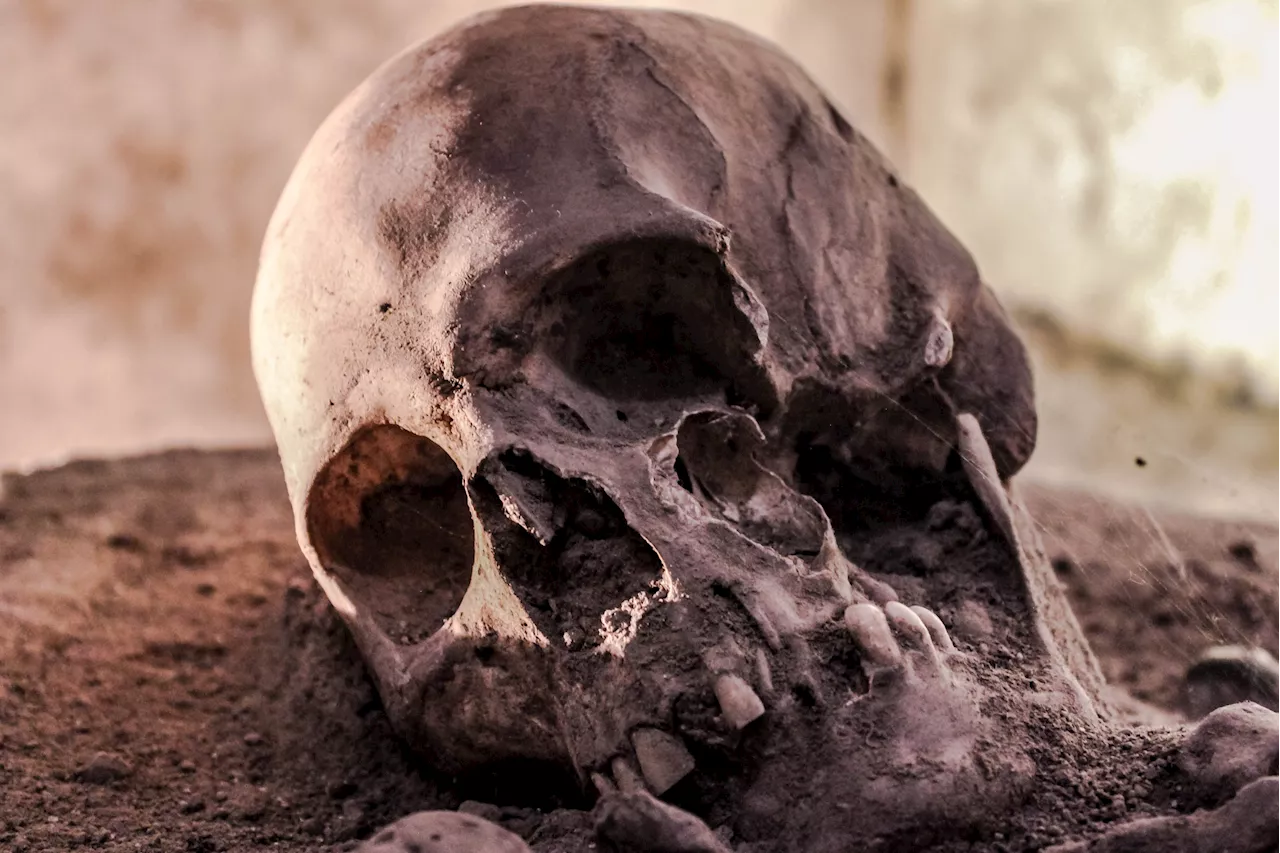 Ancient Skulls Heap Reveals Unusual Ritual Practices in Neolithic ItalyA study of a prehistoric village in Italy reveals an intriguing ritual tradition involving the collection and use of human skulls spanning centuries.
Ancient Skulls Heap Reveals Unusual Ritual Practices in Neolithic ItalyA study of a prehistoric village in Italy reveals an intriguing ritual tradition involving the collection and use of human skulls spanning centuries.
Read more »
